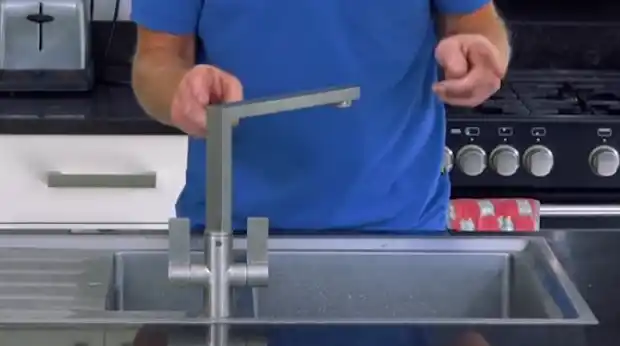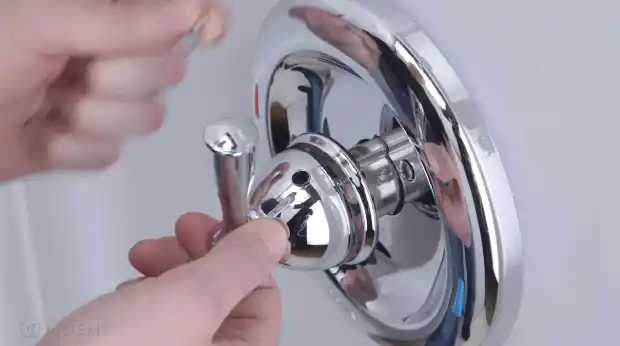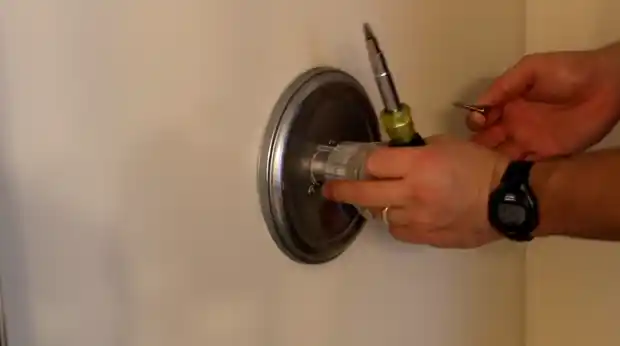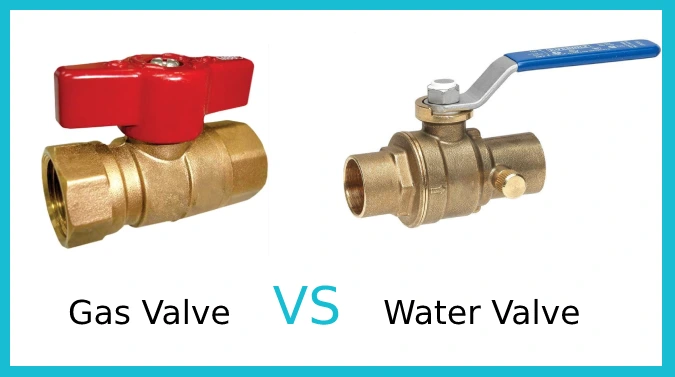Last Updated on May 7, 2023
Shower valves and shower cartridges are two integral parts of a shower system that work together to control the flow and temperature of the water. While they may appear similar on the surface, they have some significant differences in design, function, types, installation, and maintenance.
One major difference is that shower valves control water flow, while shower cartridges control the temperature of the water. We will delve deeper into these differences and help you understand how to choose and maintain suitable shower valves and cartridges for your home.
Shower Valve Vs Cartridge: 4 Differences

Design and Function
Shower valves and shower cartridges play a crucial role in controlling the flow and temperature of water in a shower system. A shower valve controls the amount of hot and cold water allowed to mix, while a shower cartridge regulates the mixing of the two.
It is important to understand how each component works to ensure an effective, safe, and efficient showering experience. A shower valve is typically installed with the hot and cold water lines leading into it.
It uses a diverter handle which allows the user to switch between multiple outlets, such as an overhead rain head or handheld sprayer. The diverter handle also typically has a temperature adjustment dial which allows for precise control over the temperature of the water coming out of the shower head.
This is done by controlling how much hot and cold water mix and flow through the valve at any given time. In contrast, a shower cartridge is responsible for regulating the actual mixing of hot and cold water within the system itself.
This system comprises a thermostatic cartridge with internal components that keep temperature constant, as well as a pressure-balancing cartridge that ensures a maintained flow rate and equalized hot/cold water pressures.
The thermostatic cartridge ensures that no matter what adjustments are made with regard to temperature, it will remain constant throughout all outlets.
A pressure-balancing cartridge ensures that your shower experience remains consistent regardless of shifts in the water demand elsewhere within the home. No more sudden drops or surges, just a steady flow and comfortable temperature.
When working in harmony, showers and tub/shower enclosures offer an enjoyable bathing experience that is both comfortable and secure. At the same time, they protect a home’s plumbing system from any damage due to misuse or mismanagement.
Types
01. Thermostatic Shower Valves

Thermostatic shower valves are designed with built-in temperature controls, which allow users to set a desired water temperature and maintain this setting throughout the duration of their shower.
This type of valve is supplied with a thermostat that senses any changes in temperature, then initiates automatic compensation processes to ensure the water temperature remains constant regardless of fluctuations in pressure.
The benefits of thermostatic valves are numerous: they provide greater user comfort and convenience, prevent scalding and potential injury from sudden temperature changes, and conserve energy by utilizing less hot water.
Additionally, thermostatic valves often come with manual overrides, so users can adjust the temperature if necessary.
02. Pressure-Balancing Shower Valves
Pressure-balancing shower valves are designed to maintain balanced water pressure over time, ensuring an even flow of hot and cold water regardless of fluctuations in pressure.
This type of valve is equipped with a diaphragm mechanism that responds automatically to any changes in pressure by restricting either the hot or cold supply as needed to maintain balance throughout the duration of the shower.
Pressure-balancing shower valves also offer several advantages: they reduce scalding risk from sudden pressure drops. They maintain constant temperatures regardless of system pressure, and they conserve energy by using less hot water overall.
03. Manual Mixing Valves
Manual mixing valves are manually adjusted valves that allow users to blend hot and cold water at desired temperatures before entering the shower head.
This type of valve typically includes two separate handles, one for controlling hot water and one for controlling cold, allowing users to customize their ideal balance between both supplies at different points during their showers if needed.
Manual mixing valves provide better user control, enhanced efficiency, and greater protection against scalding than their alternatives. This makes them an ideal choice for a variety of purposes.
04. Ceramic Disc Cartridges

Ceramic disc cartridges typically consist of two ceramic discs housed inside a cartridge body within a shower faucet assembly.
Moving discs inside the cartridge body create a secure connection between pipes when the handle is rotated clockwise or counterclockwise, ideal for regulating hot/cold water temperature, as well as single-handle systems.
Ceramic disc cartridges boast unmatched durability, performance, and control due to the lack of wear parts, friction components, and the need for lubrication.
Installations require fewer parts while force requirements remain low, yet operation remains precise with reduced noise levels. Maintenance is effortless as rebuilds or replacements occur far less often than other types demand.
05. Compression Cartridges
Compression cartridges consist primarily of rubber seals located within a brass housing which compress against each other when the handle is turned, allowing for proper connection between pipes (hot/cold) or pipes (single handle).
Compression cartridges offer enhanced durability and efficiency, require minimal force for handle-turning, reduce noise through less vibration, are simple to install with fewer parts needed, guarantee smooth operation without multiple mechanisms involved, and allow flexible replacement of O-rings using basic tools.
06. Thermostatic Cartridges
A thermostatic cartridge is a combination of two elements designed to control incoming hot and cold water flows. The user can adjust the temperature with an external dial knob or lever mounted near the faucet assembly body.
Thermostatic cartridges revolutionize the user experience, delivering precise temperature regulation and minimizing scalding risks through continuous monitoring.
In addition to greater safety, these cartridges generate improved energy efficiency by providing accurate temperatures that do not require manual overrides. All these features lead to greater cost savings in the long run.
Installation
Shower valves and cartridges play an essential role in the functioning of a shower system, as they are responsible for controlling the water flow and temperature. As such, it is important to ensure that they are installed correctly.
To install either a shower valve or cartridge, there are specific steps to follow, but the main difference between the two lies in where they are installed. When installing a shower valve, the components must be placed behind the control panels in the wall of your bathroom or showering area.
Usually, this requires removal from existing plumbing fixtures and the use of specialized tools, including wrenches and drills. Additionally, sealants and adhesives must be applied to ensure that all connections are airtight.
When connecting hot and cold water lines to the valves, it is important to install them on separate pipes so that each can be controlled independently. Furthermore, it is essential to remember that safety measures should be taken by wearing protective equipment when performing these operations.
On the other hand, when installing a shower cartridge inside the shower valve, there may already be a hole drilled into which you need to slot it in with force unless you have an unusual model or use an Allen key or screwdriver; depending on whether your model has screws or not.
Make sure any water supply connections match those found on your new cartridge before sliding it into place. Finally, secure with sealants if necessary and test your new setup before using your system again. It is essential to consult a professional before any shower valve or cartridge installation.
DIY plumbing may present several risks, including potential leaks caused by incompetent sealing procedures or ill-fitting valves, making it best practice to seek the help of an expert. However, with the correct procedure followed; both installations should pose no problem.
Maintenance and Replacement

Maintaining and replacing shower valves and cartridges is an important part of keeping a home in top condition. Understanding the differences between these two components can help ensure that any maintenance or repairs are completed properly.
Shower valves control the flow of water to the shower head, allowing you to adjust the temperature and pressure as desired. They can be mechanical or electronic, with electrical models providing more precise control.
To keep your shower valve functioning properly, it’s important to adhere to a regular maintenance schedule. Assess the valve for corrosion, leaks, and any damage. Test temperature control to confirm the proper functioning of all parts. Clean regularly with a mild detergent solution.
If any problems are found that cannot be fixed by cleaning or minor adjustments, then it may be time to replace the valve entirely. Shower cartridges allow you to control water flow once output from the shower head itself.
Unlike valves which typically have a longer lifespan of around 10 to 15 years before needing replacement, cartridges often need replacing every few years due to wear and tear from regular operation and exposure to soap scum and limescale buildup.
A blocked cartridge can easily be salvaged with the help of white vinegar solutions or other descaling agents. If it continues to leak or does not provide adequate water flow, a full replacement is necessary.
It is possible to replace a cartridge yourself if you have some basic DIY skills; however, if not, it is best to contact a professional plumber who can do this safely and efficiently with minimal disruption.
Overall, understanding how both shower valves and cartridges work is key when it comes to maintaining your bathroom’s plumbing system and knowing when either one needs replacing.
Regular inspections should be conducted so that as soon as any issues arise, they can be quickly dealt with, whether through simple cleaning and maintenance procedures or full component replacements, before they become more serious problems down the line.
Can I Replace a Shower Cartridge Myself?
You can replace a shower cartridge yourself with the right tools and instructions. Before starting any project like this, it is important to gather all necessary supplies, such as a new cartridge, pliers, adjustable wrench or Allen key, lubricant, and Teflon tape.
After turning off the water supply and draining the system of remaining water pressure, use the pliers to remove the handle. Carefully inspect the valve stem and housing for any signs of damage or corrosion before attempting to remove them.
Once these components are removed, remove the old cartridge and lubricate its edges with petroleum jelly or mineral oil. Then install the new cartridge, ensuring it fits tightly in its housing.
Securely secure the handle back in place along with any other parts that were removed during disassembly. Finally, turn on the water supply slowly to test if everything is working correctly.

How Long does a Cartridge Last in a Shower?
The lifespan of a shower cartridge can vary significantly depending on several factors, such as usage rates and quality of installation. Still, they generally last between seven to fifteen years on average.
Regular maintenance can help extend their life expectancy even further by periodically inspecting for signs of leaks or wear and tear to catch any potential issues early on before more severe damage occurs.
In some cases, cartridges need to be replaced sooner due to improper installation or incorrect sizing, which causes them to become clogged with junk particles or otherwise malfunction sooner than expected.
What Causes a Shower Cartridge to Fail?
A shower cartridge can fail due to a variety of reasons, including mineral deposits in the water, worn-out washers, corroded parts, and loose connections. In some cases, the valve itself may be faulty or installed incorrectly.
Mineral deposits can build up on the internal surfaces of the cartridge, preventing it from operating smoothly and leading to a breakdown. Over time, washers can wear out from repeated contact with water and other elements, causing them to become brittle and less effective at sealing the system.
Corrosion is also a common problem in valves used near saltwater or areas with hard water high in dissolved minerals. Finally, improper installation or loose connections can lead to failure as well.
What is the Most Common Shower Valve?
The most common shower valve is the single-handle pressure-balanced valve. This type of valve works by using a pressure balance plate that prevents hot water from entering if cold water suddenly turns off due to pipe corrosion or other problems with plumbing systems.
This helps maintain a consistent temperature even if there are fluctuations in pressure or flow rate. Single-handle valves are often easier to install than dual-handle valves because they only require one hole in the wall for installation and fewer parts overall.
How do I Know If My Shower Valve is Bad?
There are several signs that indicate a shower valve may be bad and need to be replaced. If you find that the handle of your shower valve is not fully closing off when turned all the way off or if there is leaking around it even when closed, then this could be an indication that it has failed and needs to be replaced immediately.
Suppose you notice any increased noise, such as whistling or gurgling, coming from your bathroom pipes after turning on your shower. This could signal an issue with your shower valve and weak water pressure compared to what should be at full strength when turned on properly.
Lastly, if you feel like your shower isn’t getting hot enough despite having adjusted the settings accordingly, your shower valve may need to be replaced, which would likely need to be replaced soon for it to work correctly again.

Final Thoughts
The flow and heat of the water in a shower system are controlled by shower valves and cartridges.
Understanding the differences between them in terms of design, types, function, installation, and maintenance can help you make an informed decision when choosing and maintaining these components for your home.
By following the tips and guidelines outlined in this post, you’ll be able to ensure that your shower valves and cartridges are working properly and providing you with a comfortable and enjoyable shower experience.



